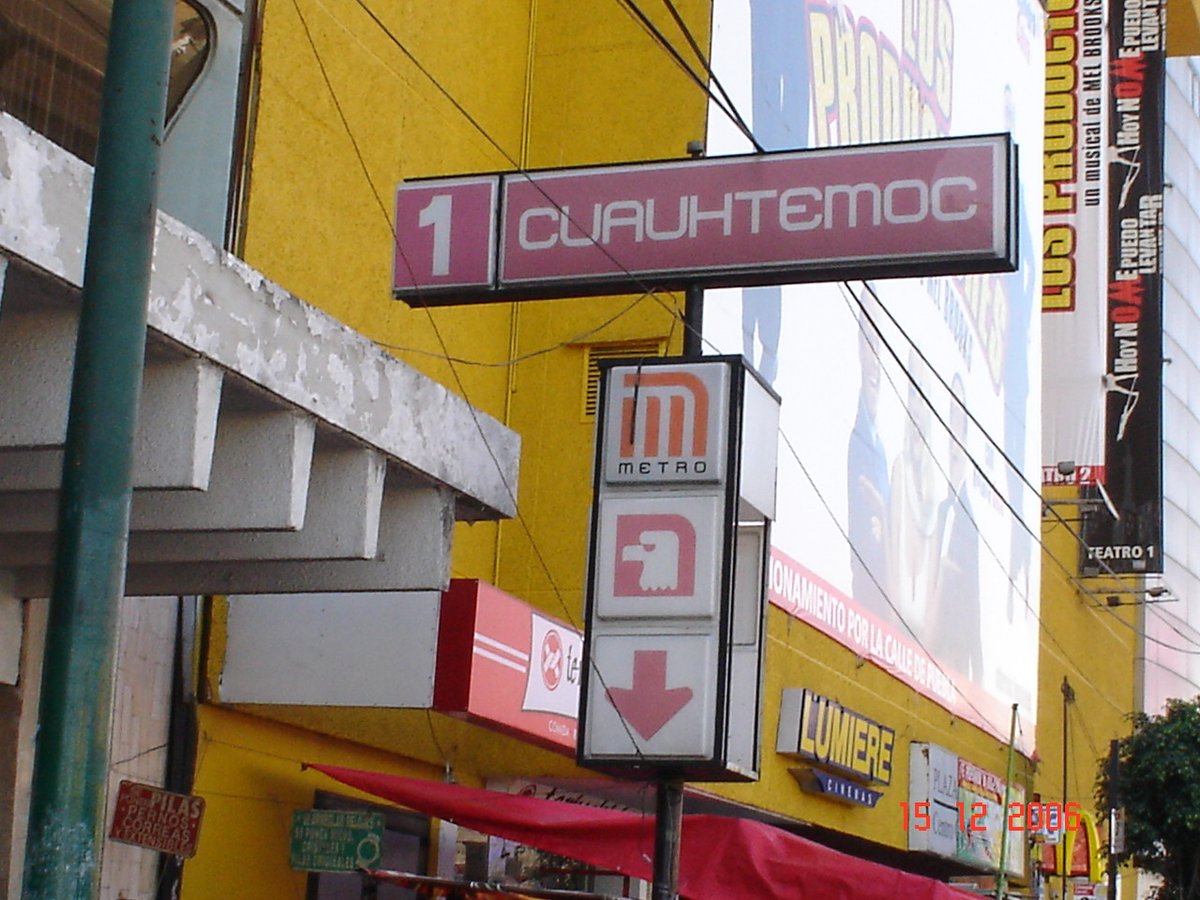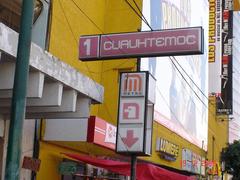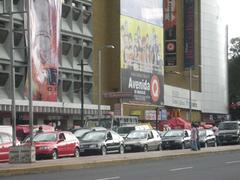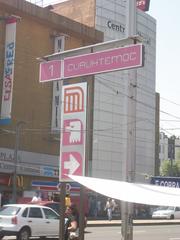
Cuauhtémoc Mexico City Visiting Hours, Tickets, and Historical Sites Guide
Date: 14/06/2025
Introduction: The Historic and Cultural Heart of Mexico City
Cuauhtémoc is the vibrant epicenter of Mexico City’s history and culture, where ancient Mexica roots intertwine with colonial legacy and contemporary urban life. Named after the last Aztec emperor, who valiantly resisted the Spanish conquest, Cuauhtémoc encompasses the birthplace of Tenochtitlan and a wealth of archaeological, architectural, and artistic treasures. This borough is a living museum—its streets, plazas, and neighborhoods tell the story of Mexico’s evolution from pre-Hispanic times to today.
In this guide, you’ll find practical information on visiting hours, tickets, accessibility, safety, and tips for making the most of your journey through Cuauhtémoc’s landmarks, museums, and neighborhoods. Whether you’re a history enthusiast, art lover, or culinary explorer, Cuauhtémoc offers a unique window into the soul of Mexico City.
For further details and the latest updates, reference resources such as Cuauhtémoc Visitor’s Guide, Mexico City Historic Center, and Backpack and Snorkel.
Contents Overview
- Discover Cuauhtémoc: Mexico City’s Historic and Cultural Core
- Pre-Hispanic Foundations: Tenochtitlan and Tlatelolco
- Colonial and Independence Landmarks
- 20th Century Icons and Modern Neighborhoods
- UNESCO Recognition and Preservation
- Festivals, Markets, and Social Life
- Practical Visitor Information
- Visual Resources and FAQs
- Deep Dive: Historical and Cultural Foundations
- Symbolism, Art, and Architecture
- Museums and Cultural Institutions
- Neighborhood Highlights
- Gastronomy and Living Culture
- Social Diversity and Contemporary Issues
- Visitor Tips and Accessibility
- Key Landmarks and Museums: Visiting Hours and Ticket Information
- Monumento a Cuauhtémoc: Complete Visitor Guide
- History and Significance
- Visiting Logistics
- Safety, Health, and Accessibility
- Nearby Attractions
- Visitor Etiquette and FAQs
- Summary and Visitor Recommendations
- Sources and Official Links
Discover Cuauhtémoc: Mexico City’s Historic and Cultural Core
Pre-Hispanic Foundations: Tenochtitlan and Tlatelolco
Cuauhtémoc is built atop the legendary city of Tenochtitlan, founded in 1325 by the Mexica (Aztecs), whose vision of an eagle eating a serpent became Mexico’s national symbol. Explore the Templo Mayor archaeological site and museum, revealing remnants of the city’s sacred heart. Nearby, the Tlatelolco complex offers insight into ancient marketplaces and pre-Hispanic life.
- Templo Mayor Museum: Open Tuesday to Sunday, 9:00 AM–5:00 PM. Tickets: ~85 MXN (discounts for students/seniors). Accessibility: ramps and elevators available.
Colonial and Independence Landmarks
After the fall of Tenochtitlan, the Spanish constructed grand edifices over the ruins. The Mexico City Metropolitan Cathedral, National Palace, and landmark plazas like the Zócalo (Plaza de la Constitución) are cornerstones of colonial and post-independence history.
- Metropolitan Cathedral: Daily, 8:00 AM–8:00 PM. Free entry.
- National Palace: Tuesday to Sunday, 9:00 AM–5:00 PM. Free with advance reservation.
20th Century Icons and Modern Neighborhoods
Cuauhtémoc’s evolution continues through its 20th-century icons: the Palacio de Bellas Artes, the Monumento a la Revolución, and the Torre Latinoamericana (for panoramic city views). Modern neighborhoods like Roma, Condesa, and Zona Rosa are renowned for their Art Deco buildings, vibrant nightlife, and cosmopolitan culture.
- Palacio de Bellas Artes: Tuesday to Sunday, 11:00 AM–5:00 PM. Tickets: ~70 MXN.
- Torre Latinoamericana: Daily, 9:00 AM–11:00 PM. Tickets: ~130 MXN.
- Monumento a la Revolución: Tuesday to Sunday, 10:00 AM–6:00 PM. Tickets: ~50 MXN.
UNESCO Recognition and Preservation
Cuauhtémoc’s Centro Histórico is a UNESCO World Heritage Site, celebrated for its blend of pre-Hispanic, colonial, and modern influences. Key museums like the Museo del Templo Mayor and Museo Nacional de Arte display priceless artifacts and artworks.
Festivals, Markets, and Social Life
From mariachi music at Plaza Garibaldi to artisan shopping at La Ciudadela Market and culinary adventures in Mercado Roma, Cuauhtémoc pulses with energy. Annual events such as the Day of the Dead and Independence Day transform public squares into vibrant stages for tradition and celebration.
Practical Visitor Information
- Getting There: Served by Metro Lines 1, 2, and 3; multiple bus routes; ride-sharing apps (Uber, Didi).
- Guided Tours: Book in advance for historical, art, or food-focused experiences.
- Safety: Tourist areas are generally safe; stay alert in crowds and after dark.
- Accessibility: Most major sites are wheelchair accessible; check specifics before your visit.
- Travel Tips: Carry cash for markets, use bottled water, and keep emergency contacts handy.
Visual Resources and FAQs
- Virtual Tours: Museums and landmarks often offer online tours—visit their official websites.
- Maps: Downloadable maps are available from tourism portals.
- FAQs: See below for answers to common visitor questions.
Key Landmarks, Museums, and Urban Spaces: Visiting Details
Main Landmarks
- Zócalo (Plaza de la Constitución): Open 24/7, free access, fully accessible.
- Templo Mayor: Tuesday–Sunday, 9:00 AM–5:00 PM, ~85 MXN.
- Metropolitan Cathedral: Daily, 8:00 AM–8:00 PM, free.
- Palacio de Bellas Artes: Tuesday–Sunday, 11:00 AM–5:00 PM, ~70 MXN.
- Alameda Central Park: Daily, 6:00 AM–10:00 PM, free.
- Torre Latinoamericana: Daily, 9:00 AM–11:00 PM, ~130 MXN.
- Plaza Garibaldi: Open daily, especially lively at night.
- La Ciudadela Market: Open daily for crafts and souvenirs.
Notable Museums
- Museo Nacional de Antropología: Tuesday–Sunday, 9:00 AM–7:00 PM, ~85 MXN.
- Museo Mural Diego Rivera: Tuesday–Sunday, 10:00 AM–6:00 PM, ~40 MXN.
- Museo Nacional de la Revolución: Included with Monumento a la Revolución ticket.
- Museo Nacional de Arte (MUNAL): Tuesday–Sunday, 10:00 AM–6:00 PM, ~70 MXN.
- Casa de los Azulejos: Open daily, free to enter; restaurant inside.
Urban Spaces
- Alameda Central: Oldest public park in the Americas, adjacent to Bellas Artes.
- Paseo de la Reforma: Iconic boulevard featuring monuments, public art, and events.
Monumento a Cuauhtémoc: Complete Visitor Guide
History and Significance
Erected in the late 19th century on Paseo de la Reforma, the Monumento a Cuauhtémoc honors the last Aztec emperor and stands as a symbol of resilience and indigenous pride. Its bronze statue and Aztec motifs provide a powerful backdrop for national commemorations and cultural gatherings, especially on February 28.
Visiting Logistics
- Hours: Open daily, 6:00 AM–10:00 PM.
- Tickets: Free access. Audio guides (e.g., Audiala app) may incur a small fee.
- Location: Paseo de la Reforma, easily reached by Metro (Balderas, Hidalgo) or bus.
Safety, Health, and Accessibility
- Safety: Remain in well-traveled areas; use ride-sharing apps at night; beware of pickpockets during events.
- Health: Drink bottled water; select reputable food vendors; carry sanitizer.
- Accessibility: Paved sidewalks and ramps; metro stations nearby provide accessible features.
Nearby Attractions
- Museo Casa de Carranza: Dedicated to revolutionary history.
- Monumento a la Madre: Another historic monument a short walk away.
- Photogenic Spots: Paseo de la Reforma, especially at sunrise or sunset.
Visitor Etiquette
- Dress modestly during ceremonies.
- Learn a few Spanish phrases; politeness is valued.
- For solo or female travelers: share your itinerary and join group tours if desired.
Frequently Asked Questions (FAQ)
Q: What are the main historical sites in Cuauhtémoc?
A: Zócalo, Templo Mayor, Metropolitan Cathedral, Palacio de Bellas Artes, Torre Latinoamericana.
Q: How can I get tickets?
A: Most tickets are available online or at entrances; advance online purchase is recommended for popular sites.
Q: Is the area accessible for people with disabilities?
A: Yes, most major sites have ramps and elevators.
Q: Where should I go for dining and nightlife?
A: Roma, Condesa, Zona Rosa, Plaza Garibaldi.
Q: What is the best time to visit?
A: Spring (March–May) and fall (September–November) for pleasant weather and vibrant festivals.
Summary and Visitor Recommendations
Cuauhtémoc is more than a borough—it is Mexico City’s story in motion. From the grandeur of ancient ruins and colonial cathedrals to the artistic pulse of modern neighborhoods, each street reveals a chapter of resilience, creativity, and identity. The Monumento a Cuauhtémoc remains a beacon of heritage and pride, freely accessible to all.
Make your visit seamless by checking current hours, purchasing tickets in advance, and utilizing digital resources like the Audiala app for audio guides and travel tips. Whether history, art, food, or urban adventure draws you, Cuauhtémoc promises an unforgettable immersion into the heart of Mexico City.
Sources and Official Links for Cuauhtémoc Information
- Cuauhtémoc Visitor’s Guide: Exploring Mexico City’s Historic Heart, Visiting Hours, Tickets, and Top Attractions
- Discovering Cuauhtémoc: A Guide to Mexico City’s Historical and Cultural Heart
- Top Historical Monuments and Visiting Information in Mexico City’s Cuauhtémoc Borough
- Monumento a Cuauhtémoc: Visiting Hours, Tickets, Safety Tips, and Guide to Mexico City’s Historical Site
- Additional Cultural and Tourist Information
- Museums and Attractions Details













































































































































































